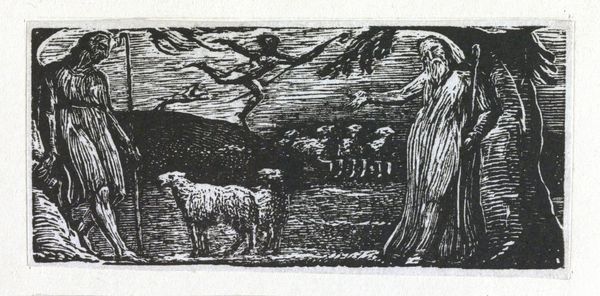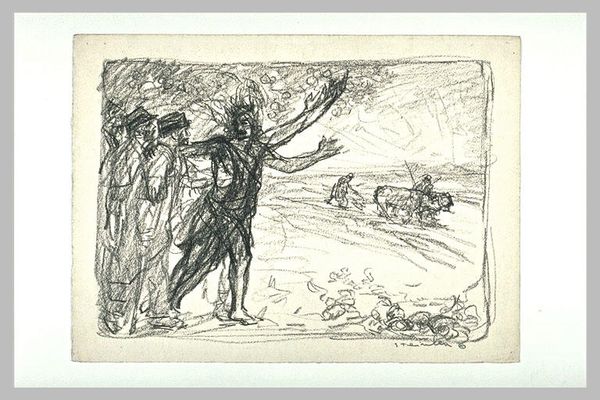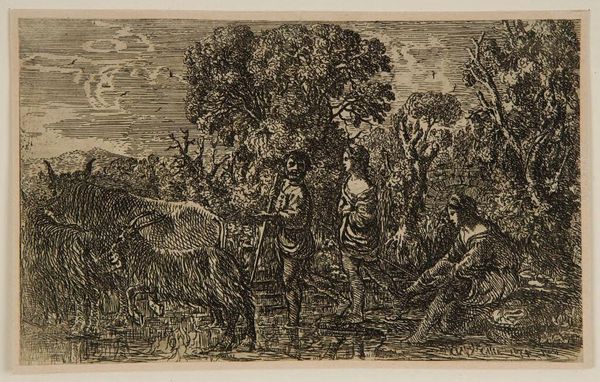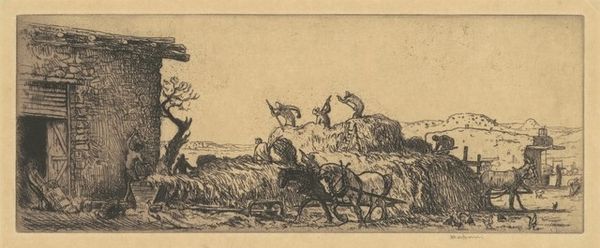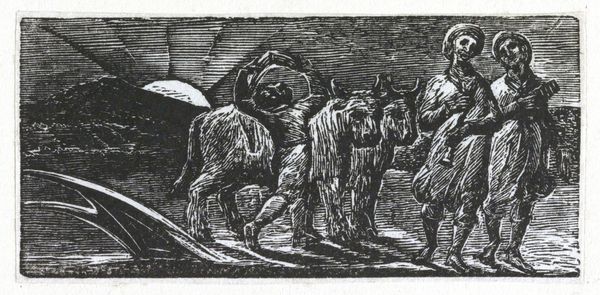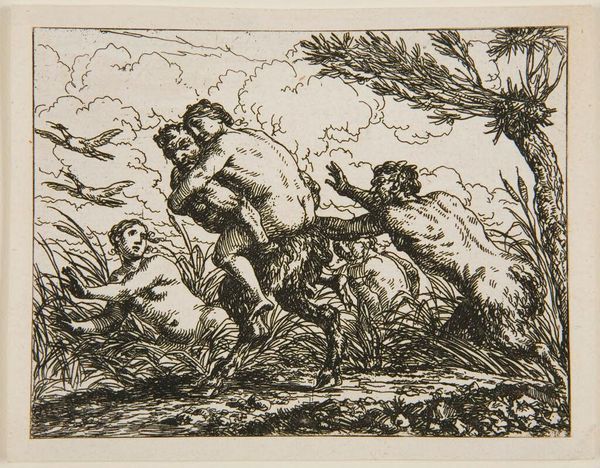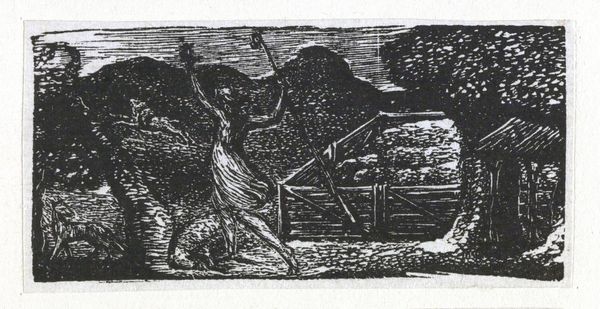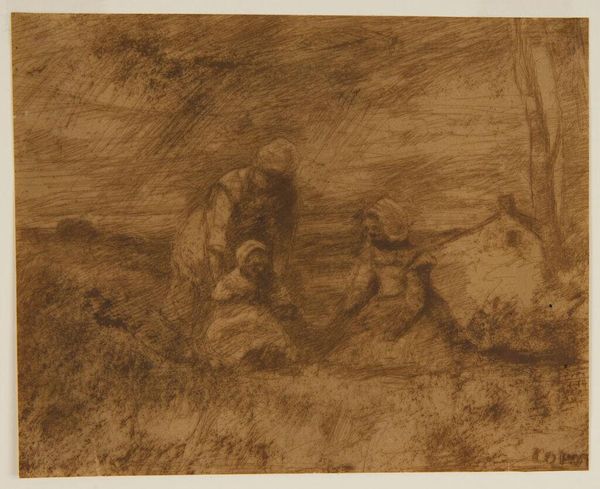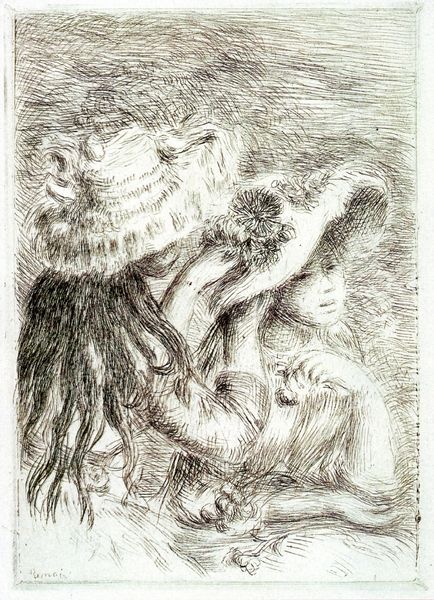
drawing, print, ink, engraving
#
drawing
#
narrative-art
#
ink painting
# print
#
pencil sketch
#
landscape
#
figuration
#
social-realism
#
ink
#
engraving
#
modernism
#
watercolor
Copyright: Public domain
Editor: Here we have Thèophile Alexandre Steinlen's "Les Agriculteurs Mutilés," created in 1916 using ink and engraving. It feels both intimate and desolate, like a memory etched onto paper. What resonates most with you in this piece? Curator: Ah, Steinlen. There's a tenderness intertwined with brutality, isn’t there? It feels like looking into a fractured mirror reflecting the first World War, which raged through the artwork creation time. It’s not a battlefield we see here but the *arrière*, the home front... observe the gaunt faces and empty gazes. There is a story of sacrifice here. It murmurs. A broken harvest in the foreground mirrors the broken men and then a promise in the background. The setting sun rises simultaneously – paradox, irony, truth. What about it touches *your* soul? Editor: The simultaneous sunset and sunrise is something I missed; that's very interesting! I’m struck by the woman gesturing, perhaps urging them onwards or pleading with them, or both! It evokes a feeling of powerlessness against a larger, unseen force. Curator: Precisely. It's a call, isn't it? To witness. To remember. A single outstretched hand… so full of grief yet brimming with hope. There is beauty even in shadows; or do the shadows possess the deepest beauty? That single extended arm has launched an entire universe into our conversation… So! What did you discover? Editor: It made me think about the cyclical nature of life and the human capacity for resilience, even in the face of unimaginable loss. What a potent piece. Thanks. Curator: And that cyclical thinking holds an optimism I do so welcome at the close of day.
Comments
No comments
Be the first to comment and join the conversation on the ultimate creative platform.
